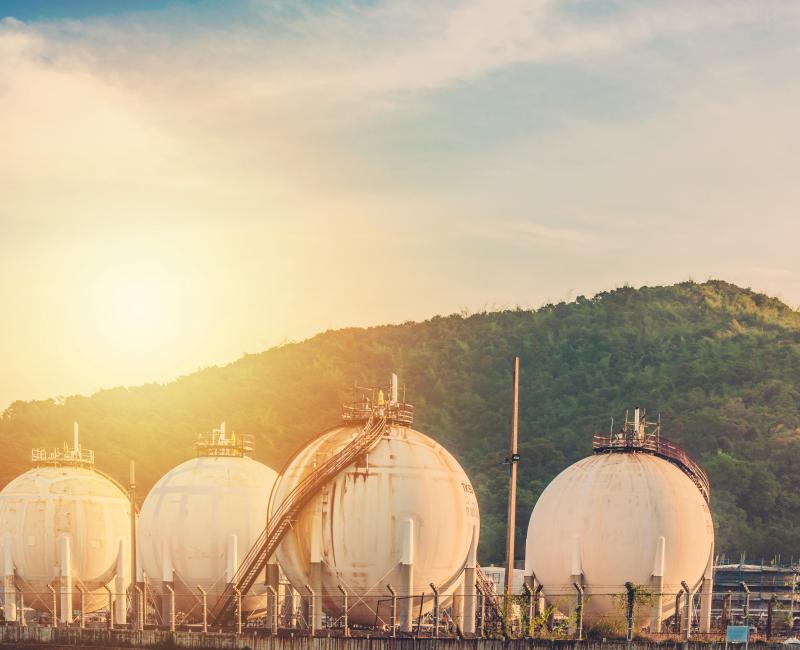ACER publishes a consultancy study on the impact of EU and national gas storage regulations

ACER publishes a consultancy study on the impact of EU and national gas storage regulations
What is it about?
ACER publishes today a consultancy study on the impact of EU and national gas storage regulations.
The study was commissioned to VIS Economic & Energy Consultants with the aim of:
-
collecting and analysing national measures recently applied by EU Member States (with and without storage facilities) within the framework of the European Gas Storage Regulation;
-
assessing how these measures contribute to achieving the storage filling targets, and, where possible, estimating the associated costs; and
-
identifying possible difficulties when implementing the measures.
What is the role of gas storage and why is it important?
Gas storages play an important role in the European gas system as they supply up to 25-30% of the total gas consumed in the EU during winter. Storing gas physically in the EU helps mitigating the impact of a potential gas disruption. This is key in a context where the EU’s internal gas production declines, while Europe aims to phase out its remaining dependency on Russian gas supply.
The energy crisis which followed Russia’s invasion of Ukraine in February 2022 underscored the importance of having gas storages adequately filled in across Europe, in case of potential gas supply disruptions.
When gas prices are similar during winter and summer, or even more expensive during summer (as it happened during 2022), market participants are discouraged from injecting gas into storages during the summer, as they would do it at a loss. As a consequence, winter storages levels may be lower and less gas can be withdrawn in case of need. This may pose a risk to the security of gas supply as storage levels at the start of the winter may not be sufficient to address supply-demand imbalances. In such cases, administrative measures may be required to ensure that gas storages are filled in, regardless of unfavourable market signals.
What are the main findings of this report?
The analysis concluded the following measures recently helped meeting the storage filling targets, despite the discouraging market signals:
-
Financial incentives for storage users: offering financial incentives for storage users facilitated the utilisation of storage capacity. Incentives such as tariff discounts and direct subsidies have proved to be effective. On the other hand, the interest of market participants in taking part in more elaborate incentive schemes, such as signing contracts for differences, was limited.
-
Stockholding obligations: imposing stockholding obligations help guaranteeing that storing filling targets can be achieved. However, when positive market price signals incentivise market participants to store gas, there is the risk they can reduce the overall flexibility of the gas system (if stockholding obligations account for the largest part of the storage capacity).
-
Last resort storage entities: appointing an entity to provide storage filling of last resort contributes to safeguard security of supply, in case the market would not act, but it comes at a cost. The mechanism should be made more efficient by planning when the entity should act, volume requirements, and introducing risk reduction mechanisms (e.g. price hedging by the designated entity).
-
Use-it-or-lose-it mechanisms: implementing these mechanisms enabled the swift release of booked but unused capacity and contributed considerably to storage filling.
The report further concluded that some measures are in need of greater transparency and verifiability.
The report also found that:
-
Member States without underground storage facilities made efforts to store gas in neighbouring countries but the remaining technical and commercial constraints should be addressed, by strengthening coordination between Member States with and without storage and finding ways to enhance regional solidarity.
-
All Member States with underground gas storage facilities met the filling target obligations. Measures implemented by Member States helped overcome negative market signals during the 2022 injection period and contributed to achieve adequate levels of stored gas.
-
In 2022, the Member States’ underground facilities collectively stored over 630 TWh of gas as result of the measures. This amount represents approximately 53% of the European Union’s total aggregated storage capacity.
What are the next steps?
As a next step, the Council of European Energy Regulators (CEER) will undertake another study on storage burden-sharing mechanisms and identification of best practices and recommendations to enhance the efficiency of storage filling obligations.
Access the report and the slides summarising the most important findings.
8 March 2024 update: Access the second part of the study.
